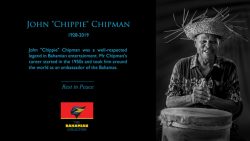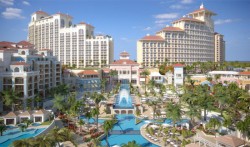One energy company that wanted to build a liquefied natural gas (LNG) pipeline from Grand Bahama to Florida has apparently changed its mind, although the company left the door open to reapply should certain conditions change.
Seafarer US Pipeline System Inc., a subsidiary of El Paso Corporation, had applied to the Federal Energy Regulatory Commission (FERC) in November 2004 to build a 41-mile pipeline from a proposed High Rock LNG Terminal in Grand Bahama to Palm Beach, Florida.
The company withdrew that application from FERC on September 29, citing lingering uncertainty surrounding development of LNG infrastructure in The Bahamas.
The formal withdrawal of the El Paso application was greeted with enthusiasm by at least one member of the local environmental lobby.
When confronted with the news, Sam Duncombe of reEarth stated “one down, two to go.”
The other two LNG proposals being actively considered by the government are proposals from Virginia-based AES Corporation and French company, Suez, formerly trading as Tractebel.
On the withdrawal of the application by Seafarer, El Paso senior counsel James Johnstone wrote to FERC on September 29 that “because supplies of liquefied natural gas have not been committed and conditions for developing LNG infrastructure in The Bahamas remain uncertain, Seafarer cannot now make the substantial commitment to perform site-specific geotechnical surveys required by letter order dated Sept. 21, 2006.”
“Seafarer appreciates the time and effort that commission staff and the interagency team have devoted to this proceeding. We will keep the Office of Energy Projects informed of plans to re-apply when conditions improve.”
FERC on September 21 requested the company provide updated geotechnical data for use in compiling a draft environmental impact statement since the underwater pipeline would have to run through sensitive coral resources off the Florida coast.
The pipeline, as originally proposed, would have run from an interconnection with Seafarer Bahamas Pipeline Systems in The Bahamas for about 35 miles before making landfall at Florida Power & Light Co.メs power plant in Riviera Beach, Fla.
The US line would have then traveled six miles onshore to a proposed interconnection with FGT.
The High Rock LNG facility, along with Seafarer Bahamas Pipeline Systems, was planned for South Riding Point on Grand Bahama Island. Supply of LNG was initially thought to be coming from Qatar.
Meanwhile, AES remains embroiled in a legal battle with the government of the Dominican Republic over allegations of illegal dumping of toxic waste.
AES, in response to the much-publicized lawsuit filed by the government of the Dominican Republic, recently filed a motion to dismiss in US District Court in the Eastern District of Virginia.
A ruling on whether the case will be dismissed is expected within the month.
AES counsel Dane Butswinkas of Washington DC law firm, Williams and Connolly, reportedly argued that the government of the Dominican Republic did not have standing to sue AES.
Reports say Mr. Butswinkas also argued that the Racketeer Influenced and Corrupt Organizations (RICO) statute did not apply because the duration of the alleged illegal conduct was not long enough to establish a pattern of conduct, a prerequisite for RICO to apply.
Mr. Butswinkas also argued that AES had a permit to dump the waste from its Puerto Rico power plant in the Dominican Republic, but Dr. Bart Fisher, lawyer for the government of the Dominican Republic, has always contended that the permit was secured through bribery, and was therefore illegal.
Dr. Fisher told the Journal that the case is on Virginiaメs “rocket docket,” and that if US District Court Judge Gerald Bruce Lee did not dismiss the case, it would go to trial by February 2007 at the latest.
“Discovery is well underway,” he said, adding that depositions are being taken and interrogatories ヨ written questions designed to discover key facts about an opposing partyメs case ヨ are underway.
Judge Lee will preside over the trial, if he does not dismiss the case.
By: Quincy Parker, The Bahama Journal



